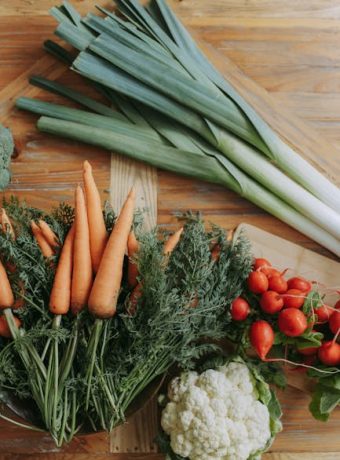Summer Vegetables: Fresh Picks for Delicious Meals
Summer is the perfect time to embrace fresh, local produce. With an abundance of vibrant and nutrient-rich vegetables available, you can create a variety of delicious and healthy meals. This guide will introduce you to some of the best summer vegetables and provide tips on how to incorporate them into your cooking.
Why Choose Seasonal Vegetables?
Choosing seasonal vegetables has numerous benefits. Not only are they fresher and more flavorful, but they are also more affordable and environmentally friendly. According to the USDA, eating seasonal produce can reduce your carbon footprint and support local farmers.
Top Summer Vegetables to Enjoy
Tomatoes
Tomatoes are a quintessential summer vegetable known for their juicy texture and rich flavor. They are incredibly versatile and can be used in salads, sauces, or simply eaten fresh.
Nutritional Benefits: Tomatoes are rich in vitamins C and K, potassium, and folate. They also contain lycopene, an antioxidant linked to reduced risk of heart disease and cancer.
Recipe Idea: Try a Caprese salad with fresh tomatoes, mozzarella, basil, olive oil, and a balsamic glaze for a refreshing summer dish.
Zucchini
Zucchini is another versatile summer vegetable that can be grilled, sautéed, or spiralized into noodles. Its mild flavor pairs well with a variety of seasonings and ingredients.
Nutritional Benefits: Zucchini is low in calories but high in vitamins A and C, as well as fiber and antioxidants.
Recipe Idea: Make a zucchini noodle salad with cherry tomatoes, feta cheese, and a lemon vinaigrette.
Bell Peppers
Bell peppers come in a variety of colors, each offering a slightly different flavor profile. They can be eaten raw, grilled, or stuffed for a variety of culinary applications.
Nutritional Benefits: Bell peppers are an excellent source of vitamins A and C, and they also provide fiber and folate.
Recipe Idea: Try stuffed bell peppers with quinoa, black beans, corn, and spices for a hearty and healthy meal.
Corn
Sweet corn is a summer staple that can be enjoyed on the cob, in salads, or as a side dish. Its sweet and crunchy kernels add texture and flavor to any meal.
Nutritional Benefits: Corn is a good source of fiber, vitamins B and C, and essential minerals like magnesium and potassium.
Recipe Idea: Grill corn on the cob and top with a mixture of butter, lime juice, and chili powder for a delicious summer treat.
Eggplant
Eggplant is a hearty vegetable that can be roasted, grilled, or used in a variety of dishes like ratatouille or baba ganoush.
Nutritional Benefits: Eggplant is rich in fiber, vitamins B1 and B6, and antioxidants like nasunin, which may protect brain cells from damage.
Recipe Idea: Try a baked eggplant parmesan with marinara sauce and mozzarella cheese for a classic Italian dish.
Tips for Buying and Storing Summer Vegetables
Buying Tips
When shopping for summer vegetables, look for produce that is vibrant in color and free from blemishes or soft spots. Visit your local farmers’ market for the freshest options.
Buying in-season vegetables not only ensures better flavor but also supports local agriculture and reduces the environmental impact of transportation.
Storing Tips
Proper storage is key to maintaining the freshness and flavor of summer vegetables. Here are some tips:
- Tomatoes: Store at room temperature and avoid refrigeration to preserve their flavor.
- Zucchini: Keep in a plastic bag in the refrigerator for up to a week.
- Bell Peppers: Store in the refrigerator crisper drawer for up to two weeks.
- Corn: Keep in the husk and store in the refrigerator for up to three days.
- Eggplant: Store in a cool, dry place and use within a few days for the best flavor.
Conclusion
Incorporating summer vegetables into your meals is a delicious and nutritious way to take advantage of the season’s bounty. From tomatoes and zucchini to bell peppers, corn, and eggplant, there are countless ways to enjoy these fresh picks. By choosing seasonal produce, you can savor the best flavors of summer while supporting local farmers and reducing your environmental impact.
So, head to your local farmers’ market, stock up on these vibrant vegetables, and get creative in the kitchen. Your taste buds and your health will thank you!



